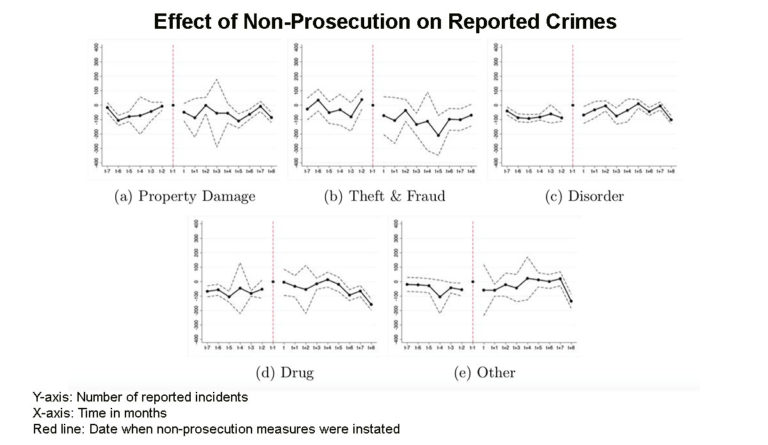Preventing Prosecution
Reported crimes decreased over time after non-prosecution measures were implemented for nonviolent misdemeanors in Suffolk County, Massachusetts.

Read Time: 2 minutes
Published:
Misdemeanors such as trespassing, drug possession, and petty theft constitute approximately 80% of US court cases, with 13 million Americans charged each year. One approach to depopulating an overcrowded carceral system is to limit prosecution of nonviolent misdemeanors.
Alternatives to prosecution include non-prosecution, deferred incarceration with community supervision, community service, and pre-trial probation and dismissal of charges. Opponents worry that these alternatives to prosecution and time in jail or prison are too lenient. They argue that these more forgiving options encourage future crime.
A recent study by Amanda Y. Agan and colleagues evaluated data following the District Attorney’s decision not to prosecute nonviolent misdemeanors in Massachusetts’ Suffolk County between 2004 and 2018. The Figure above shows the effect of non-prosecution on reported crimes. The y-axis of each plot represents the number of reported incidents, and the x-axis shows time in months. The red line signifies when non-prosecution measures were applied. After implementing non-prosecution measures, the number of reported crimes decreased over time.
Of note and not shown here, within two years following arraignment, non-prosecution reduced the likelihood of a new misdemeanor complaint by 60% and lowered the likelihood of a felony complaint by 47% compared to prosecuted defendants.
Prosecution leaves a permanent mark that can tether the convicted to the justice system for life. Avoiding the criminal justice system allows defendants to spend more time at work and with their family, lowering their risk for recidivism. Additionally, not having a criminal record may increase defendants’ job prospects and decrease their risk for future crimes.
White people are almost 75% more likely than Black people to have misdemeanors dismissed or reduced to less severe charges. Alternative punishments for misdemeanors can avoid condemning people of color to the mass incarceration rabbit hole while also lowering overall crime rates.
For more information about incarceration and race, visit the Equal Justice Initiative.
Databyte via Amanda Y. Agan, Jennifer L. Doleac, Anna Harvey. Misdemeanor Prosecution. National Bureau of Economic Research. March 2021.



